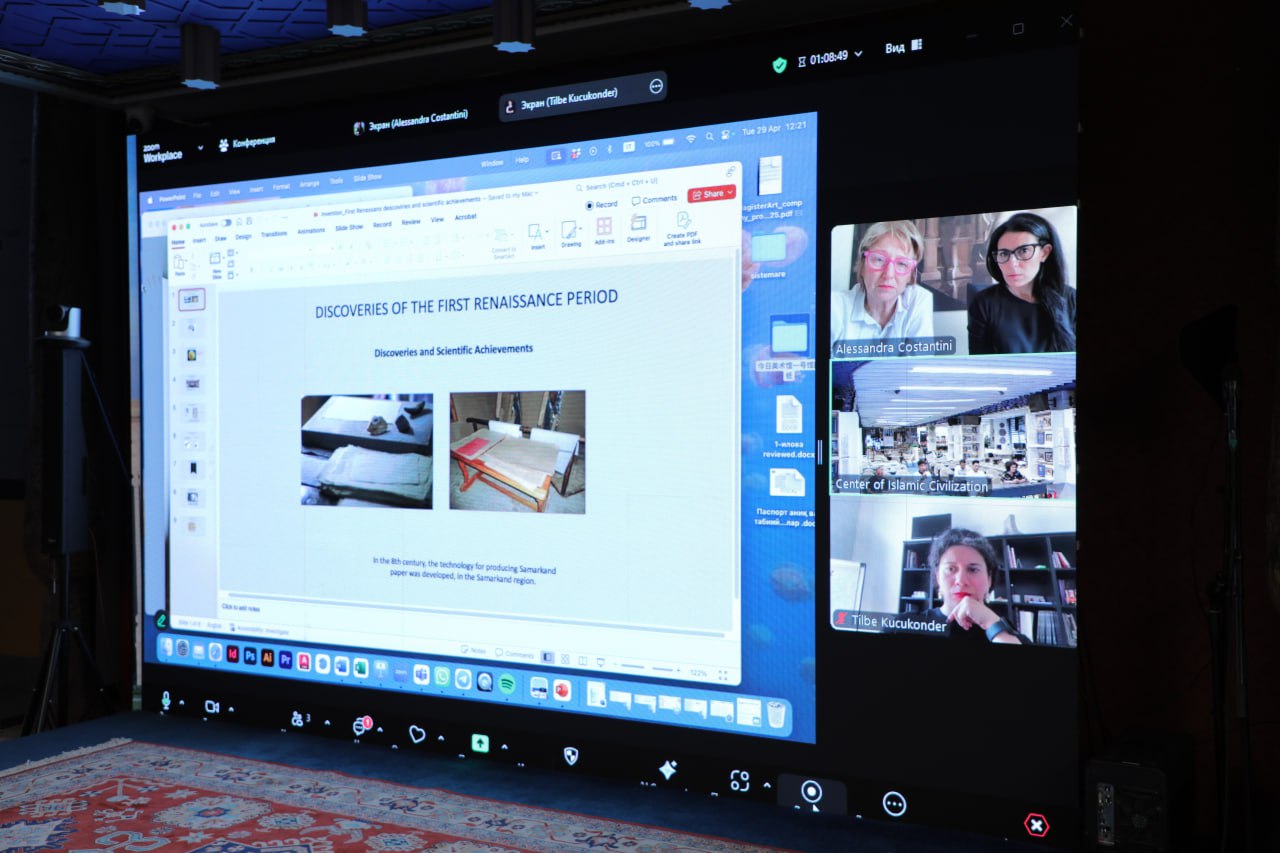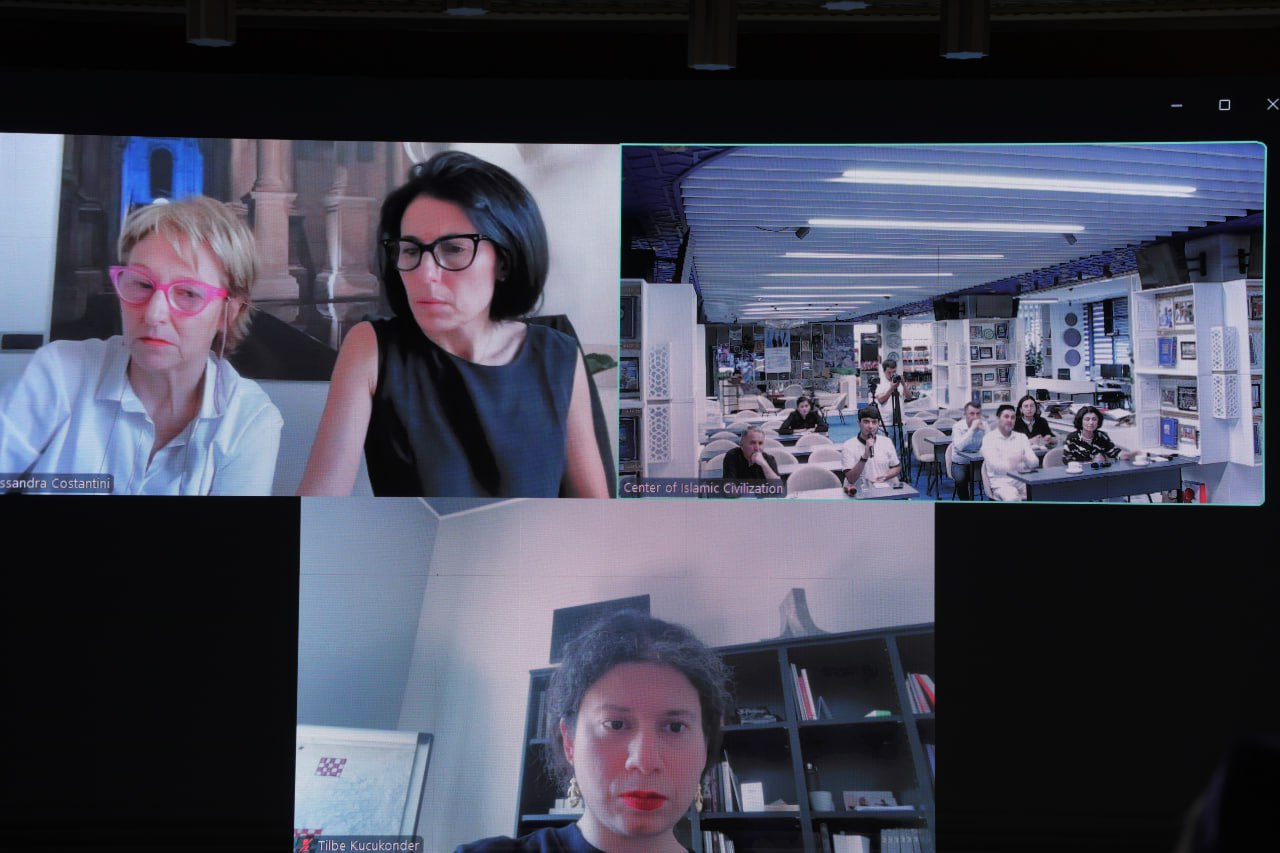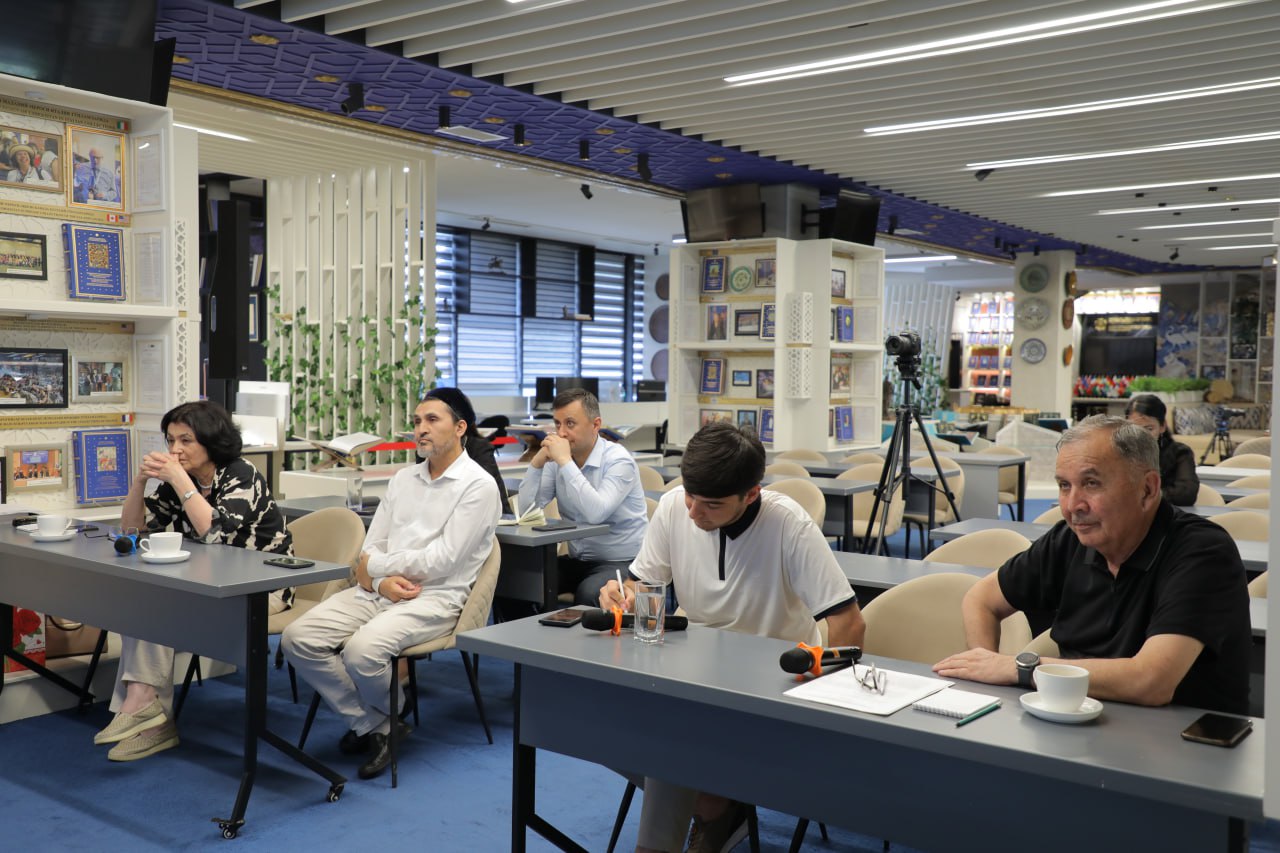A New Perspective on the First Renaissance: Innovative Approaches to Museum Exhibitions
At the Center for Islamic Civilization in Uzbekistan, a discussion was held regarding the museum exhibition within the section dedicated to the First Renaissance era. The event was attended by Doctor of Historical Sciences, Professor Surayyo Karimova, Senior Researcher at the Center Zokhidullo Munavvarov, as well as representatives from the Italian company Magister Art.
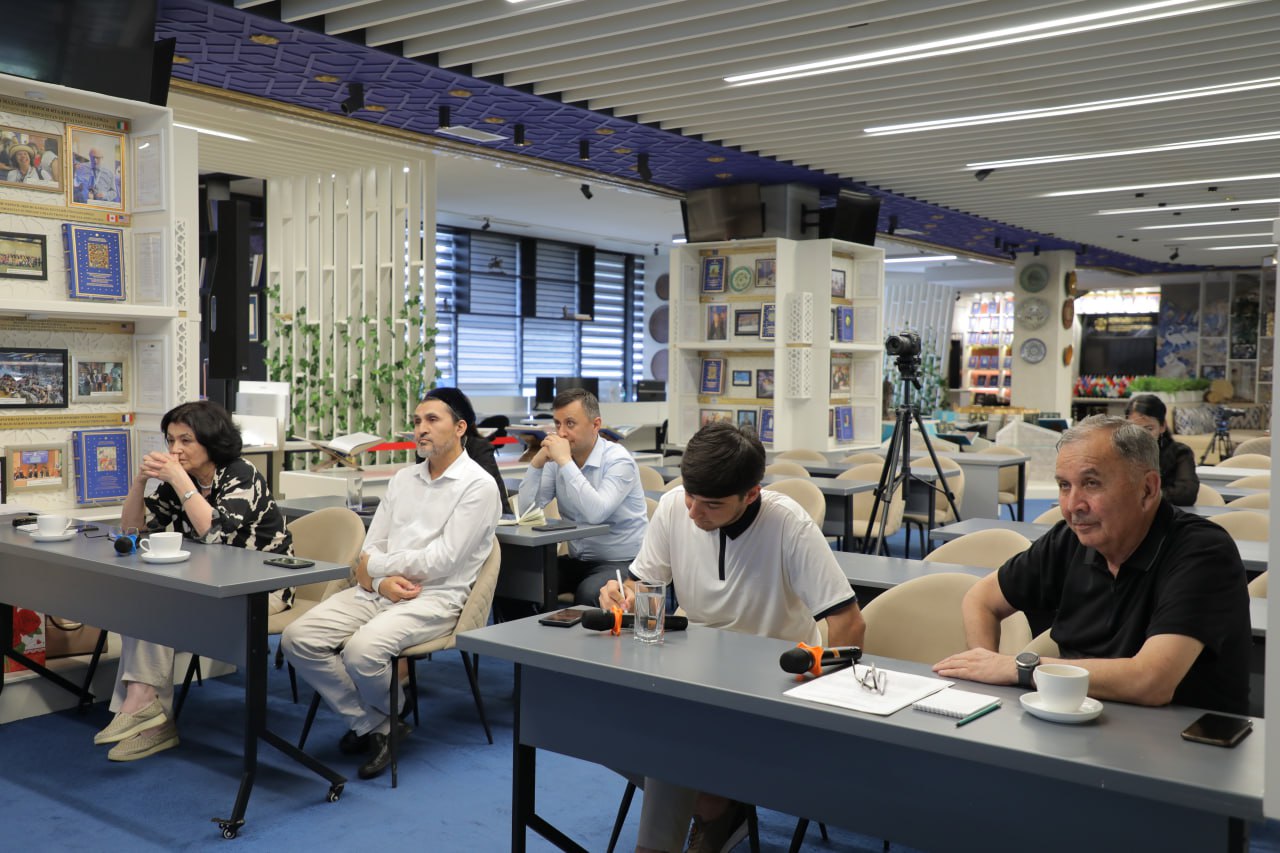
During the meeting, the museum concept for this section was discussed in detail. Special attention was given to the scientific, visual, and technological enrichment of the exhibition. The Creative Director of Magister Art, Alessandra Costantini, presented information about the preparatory museum work carried out based on materials provided by Uzbek scholars, concerning the First Renaissance era in Uzbekistan, as well as the outstanding scholars and their discoveries.
"We visited the Museum of Science, Technology, and Innovation in Turkey. Despite a large amount of information, there were few exhibits, which led to low visitor engagement. In contrast, in the Italian Museum of Science, the focus is on the practical aspect of exhibits, not just theory. We want to apply the same approach here at the Center," noted the company representative.
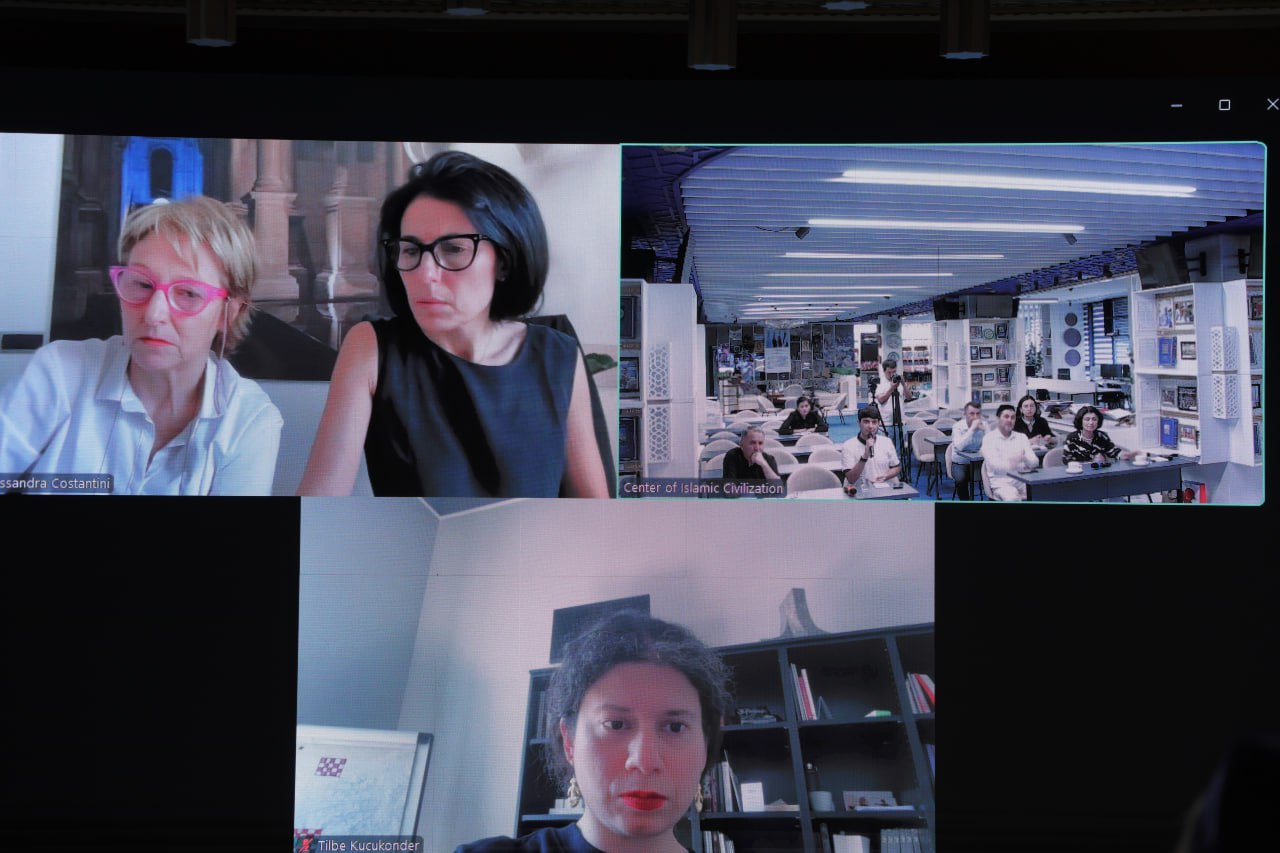
"Our goal is to make the exhibition interesting, not overloaded with dry facts. We live in the era of high technologies, and if a large amount of factual information needs to be conveyed, it can be additionally reflected in the form of QR codes, interactive links, and symbols. We plan to display inventions on a wall with the symbol of the blue sky in a modern and creative format."
The video meeting, which took place on the ZOOM platform, was filled with active discussions.
It is worth noting that, at the initiative of the President of Uzbekistan, the megaproject for the creation of the Center for Islamic Civilization aims to comprehensively reveal the contributions of our ancestors to world civilization, educate youth in the spirit of dedication to this great heritage, organize scientific debates, promote current ideas and discoveries, and create new scientific content. Over 2,000 domestic and foreign scholars and specialists have been involved in the project to achieve these goals.
More than 800 projects have been developed, and their implementation is planned in three stages. The first stage has already begun, with active work underway on more than 400 projects in consultation with the members of the Scientific Council.
Most read

Over 100 experts from more than 20 countries of the world are in Tashkent!

The Center for Islamic Civilization – a global platform leading towards enlightenment

The museum of the Center for Islamic Civilization in Uzbekistan has been further enriched: unique artifacts from different parts of the world have been presented as gifts













